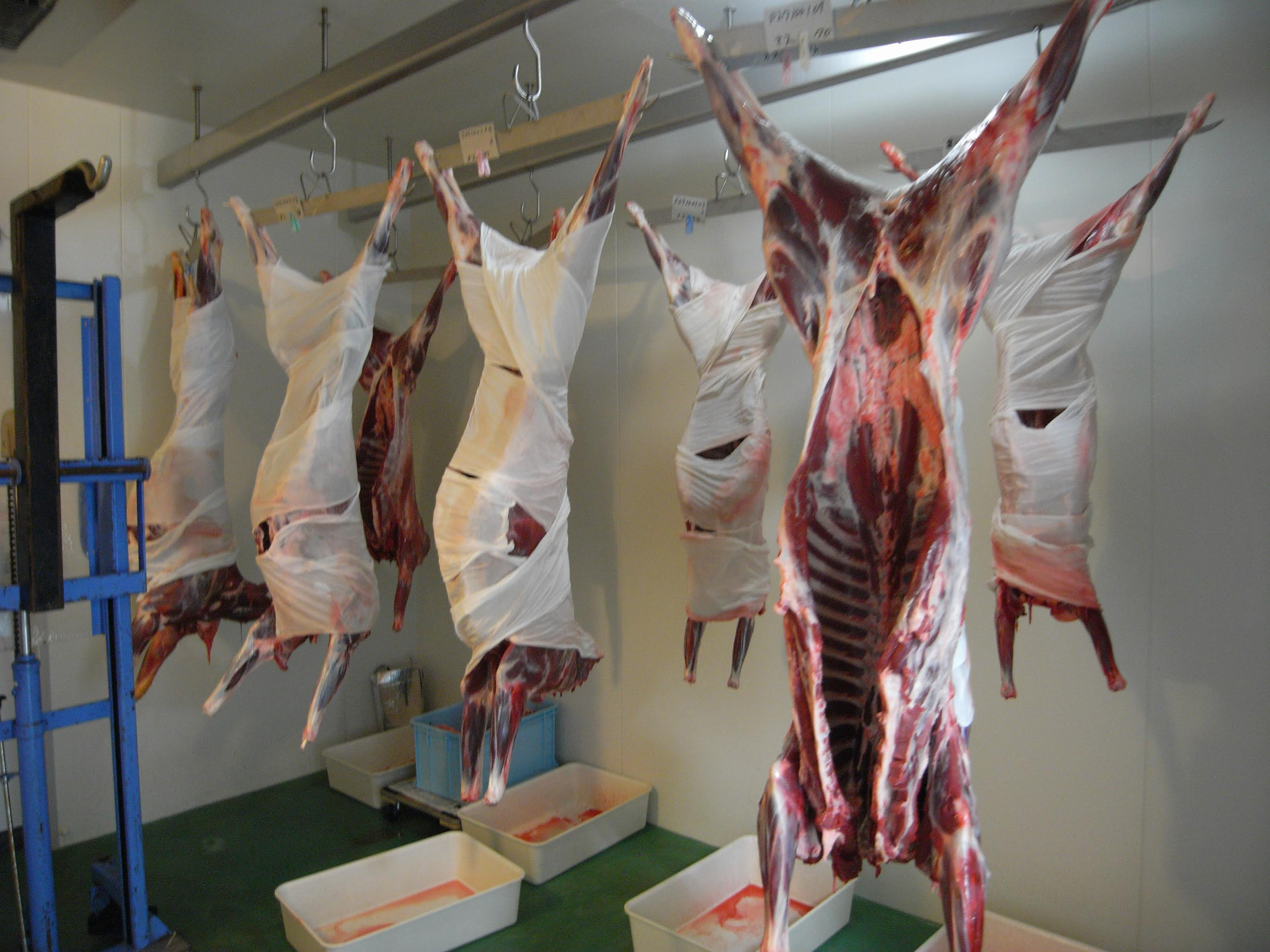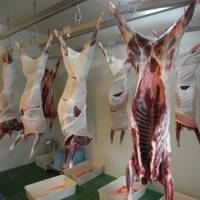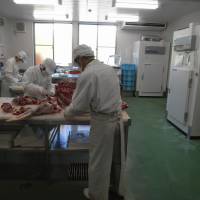For many years now I have been hammering on about Japan's runaway population of deer and wild boar, and about the huge damage they cause — especially to agriculture, silviculture, forestry and endangered wild plants in national parks.
In previous articles for The Japan Times, I have also bemoaned the nationwide waste of nutritious, healthy meat due to hunters being paid bounties to kill wild boar and deer and hand in their tails as proof — but they're then left free to bury or burn the carcasses, which are such an abundant protein resource.
Old Nic can be a terrible old nag.
On Oct. 3, however, I was invited to Mimasaka in Okayama Prefecture — a city that is doing something positive about deer and wild boar.
Spread over some 430 sq. km, Mimasaka — which came into being after many places around Japan were encouraged to merge in 2005 — now comprises the merged towns of Aida, Ohara and Sakuto and the village of Higashiawakura.
Although the city boasts a population of around 30,000, like nearly everywhere in the countryside that number is steadily decreasing even though Mimasaka has much to recommend it as a place to live or visit, including the hot springs of Yubara, Okutsu and Yunogo.
Sidetracking slightly, I must confess that as an one-time martial artist, my ears pricked up when I was reminded that Japan's most famous swordsman, Miyamoto Musashi, was born and buried in this southern part of western Honshu.
Musashi (circa 1584-1645) is supposed to have fought and been undefeated in 60 duels, with his own unique style of holding both the long sword and the short sword at the same time — a blade in both hands.
In addition, Musashi is also famous for his "Book of the Five Rings" covering strategy, tactics and philosophy, and since I first came to Japan in 1962 I have watched dozens of films, television series and dramas about that lethal fighter and man of letters.
The climate of Okayama is mild and pleasant, the greenery lush, and both deer and wild boar are increasing in the absence of natural predators since the last Japanese wolf was killed in Nara Prefecture in 1905.
Consequently, with the number of hunters declining and aging, deer and wild boar in this country are now simply regarded as pests. However, if their numbers are to be controlled, they must become resources — not pests — in the public's mind.
After a two-hour drive from Okayama City on the Seto Inland Sea directly across from the island of Shikoku, we reached a wild-game processing facility in the countryside of Mimasaka called Gibier no Sato, a name derived from the French word gibier, which has been brought into Japanese to mean any sort of game meat, and sato, meaning "hometown" or "village" in Japanese.
Even as we got out of the car, we could hear deer whistling in the woods behind the plant, which was built with funding from the Ministry of Agriculture, Forestry and Fisheries and opened in 2013.
While we were there a hunter arrived with a freshly killed hind (female deer) in the back of his little white truck. Within a minute the carcass was lifted out of the truck by an electric chain hoist, to which a scale was attached showing the animal weighed in at 54 kg.
Along with that detail, the deer's gender, the location of kill and the hunter's name were also recorded before processing began.
Hunters are requested to bleed deer or wild boar in the field, but not to make any other cuts. So in this case the technician made a new incision in the neck and the blood released was hosed away.
After that, the animal's forelegs were snapped off and the deer was hooked to a rail hanging from the ceiling and moved along as it was skinned, gutted and beheaded. This was done in a cool and extremely clean room, all stainless steel and concrete. There was absolutely no smell.
Next, the skinned and gutted carcass was pulled along the overhead rail to a cold room with a temperature set at 3 degrees Celsius, where it would hang for three or four days.
After that, it would be moved further along the line to the last room, where men in white coveralls, caps and masks, and wearing surgical gloves, would butcher, pack and label the meat. At that stage, too, the carcass was examined with a metal detector to ensure no bullets or pellet fragments were in the meat.
With all that done, the packed cuts of meat are put into a flash freezer, at minus 24 degrees Celsius, prior to storage and shipment.
While we were watching this process, another hunter drove up with a wild boar. It was processed in the same way, but in parallel rooms, with the first skinning and gutting rooms for deer and boar separated by thick, transparent plastic curtains.
This meat is not cheap. Right now, packed venison is fetching ¥3,000 per kilogram — but it is high quality, with no fat or sinew, and you wouldn't need much to make wonderful dishes. Wild boar is more expensive, fetching ¥5,000 per kilogram — a difference I put down to Japanese people generally being addicted to fatty meat and fish, and wild boar having more fat than deer. Both are good, but if you're on a diet then go for the venison.
I talked to the hunter who brought in the deer. He was, at age 67, the youngest in his association, he said. Perhaps the proliferation of such elderly hunters is why — while regarding deer and wild boar as pests, not resources — the Japanese government is encouraging the use of wire snares, which catch the animals by their legs. I abhor this and would encourage young would-be hunters to go through all the trouble, training and procedures to become a true hunter, with a gun. (Hunting with bows is against the law in this country.)
I am sorry if you found this at all gruesome, but I'm delighted to be able to report how — at last — a rural town in Japan is trying to get it right.
Many readers have written or emailed to ask me how they can acquire venison in reasonably sized packages, and I think that the Gibier no Sato plant in Mimasaka City is as good an answer as I can provide. The people there tell me they can send packages to anywhere in Japan — although ordering at present needs to be done in Japanese.
To contact Gibier no Sato, who also produce a handy pamphlet, phone 0868-75-4400 or fax 0868-75-4800.


















With your current subscription plan you can comment on stories. However, before writing your first comment, please create a display name in the Profile section of your subscriber account page.